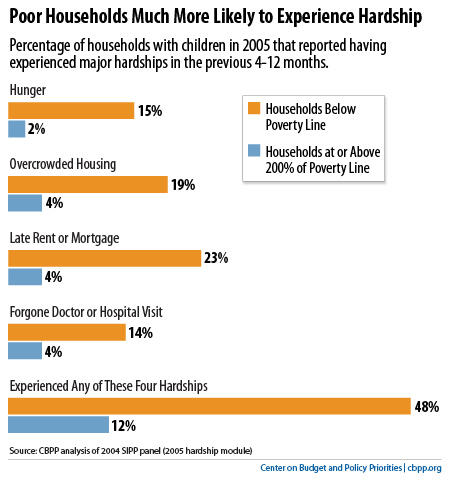off the charts
POLICY INSIGHT
BEYOND THE NUMBERS
BEYOND THE NUMBERS
Why the Upcoming Poverty Numbers Matter
Receive the latest news and reports from the Center
The Census Bureau will release figures tomorrow detailing the level of poverty in America in 2010. (We’ve issued brief pieces explaining what to look for in the new figures on poverty and health coverage.) The figures won’t show what it’s like to be poor, but other government data suggest that families living below or only modestly above the poverty line — which was about $22,300 for a family of four in 2010 — are the most likely to face daily hardships and that living in poverty can have damaging consequences over the long term. For example:

Moreover, as we’ve pointed out, research shows that poverty among young children not only slows them down in school but also may significantly shrink their earnings as adults.
Some people have suggested that many households living below the poverty line have too many possessions to be considered truly poor. But some of the possessions they cite, like a refrigerator or stove, are everyday necessities. And many were likely purchased before a job loss, serious illness, or other event pushed a family into poverty. Some families move in and out of poverty; nearly two out of five people living in poverty in 2006 were not poor two years earlier, for example.
The reality is that living in poverty places people at higher risk of hardship and is a significant barrier to equal opportunity.